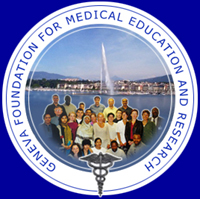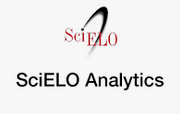The clinicopathological correlation as an essential teaching method in undergraduate medical teaching
La correlación clinicopatológica como método de enseñanza esencial en la docencia médica de pregrado
Junior Vega Jiménez
Matanzas University of Medical Sciences. Cuba.
To the editor:
The correct establishment of discrepancies and diagnostic coincidences of causes of death in medical practice, not only represents one of the most important indicators to determine the quality of care provided in the corresponding health institutions; the value of the treasure is found in teaching from undergraduate.
For several years, several investigations have been published1-4 about the clinicopathological correlation at the hospital level and about the importance of making diagnoses that reflect the true medical thought, but there are few articles that include the urgent need to include "day to day" the subject in the Medicine career. This subject, to a certain extent complex, has to be treated from the first year; in the opinion of the author, the rotation of the third year by Internal Medicine should not be expected to address it.
The anatomopathological correlation is linked to all medical specialties, covers each of the profiles of the subjects, including those known as basic. According to the anatomoclinical method, biopsies and autopsies in patients who die are the best methods of contrast. The certainty of the diagnosis is generally obtained, and often it turns out to be another or there are unexpected findings. Thus, to shape the knowledge of clinical exploration and its anatomopathological correspondence, the use of the hospital as a research and teaching scenario is gradually expanded.2,5,6
There are multiple historical elements that support the contribution of this teaching method to the development of modern medicine. From Thomas Sydenham, Giovanni Battista Morgagni, Giorgio Baglivi to Hermann Boerhaave they taught to examine the sick person and to study the "morbid process", and then, on that basis, to build the doctrine. Highlighting the importance of the teaching of medicine next to the patient's bed.2,7 They also insisted on the need for the student to follow the autopsy procedure in order to become accustomed to clearly relate the lesions (pathological changes in the morphology) with the symptoms. During this time, the autopsy and the detailed record of the detected organic alterations were almost completely obligatory for the deceased, with the aim of establishing an adequate clinicopathological correlation.6,7
Concurren aspects that show the value of this teaching method for undergraduate teaching that cover medical care, research and health administration. For undergraduate education provides the following benefits: 1,2
-
Strengthens knowledge of Anatomy, Physiology and other preceding subjects.
-
Familiarizes and trains the student in the correct filling of the medical certificate of death, at the same time that it relates them to the diagnoses of causes of death.
-
Appreciates the inaccuracies of medical diagnoses of causes of death and other diagnoses.
-
It allows estimating the benefits of learning through one's own experience and accepting death as a real possibility in the patient's care.
-
Explains the relationships of functional and structural alterations.
-
It allows us to understand the importance of autopsy in the evaluation of the quality of clinical diagnosis and hospital care in general.
-
Train the student in the use of discrepancies as mechanisms to raise the quality of clinical practice.
-
Provide materials and hypotheses for research.
-
Help guarantee undergraduate teaching with higher quality.
There will always be the classic triad of clinical method, diagnostic means and clinicopathological correlation, in which the integration of the first two elements is essential for the correct establishment of the latter. The teaching of this triad must begin from the first moment in which the student begins in the surprising world of medicine.
To achieve positive educational results, teaching should be associated with the completion of autopsy-related meetings: the "fresh pieces" meetings, the "certificate repair" meetings, the institutional clinicopathological meetings and the meetings of the Mortality Committee.2 The student must be aware of the existence of these teaching media from the initial moment in which he begins in higher medical education, and know how to interrelate them with all the activities included in his curriculum.
I consider that the prestigious magazine EDUMECENTRO, as an organ for scientific dissemination of educators in the health sciences of Cuba, has the enormous responsibility of spreading this topic, in order to increase the percentage of publications on the subject.
Declaration of interests
The author declares no conflict of interest.
REFERENCIAS BIBLIOGRÁFICAS
1. Hurtado de Mendoza Amat J. La autopsia como fortaleza del sistema de salud de Cuba. Rev Cubana Salud Pública [Internet]. 2016 [citado 25 Abr 2017];42(2):[aprox. 8 p.]. Disponible en: http://www.revsaludpublica.sld.cu/index.php/spu/article/view/714/590
2. Hurtado de Mendoza Amat J. Autopsia. Garantía de calidad en la Medicina. 2 ed. La Habana: Editorial Ciencias Médicas; 2014.
3. Hurtado de Mendoza Amat J, Álvarez Santana R, Borrajero Martínez I. Discrepancias diagnósticas en las causas de muerte identificadas por autopsias. Cuba 1994-2003. Primera parte. Patol Rev Latinoam [Internet]. 2008 [citado 12 Jul 2017];46(2):[aprox. 11 p.]. Disponible en: http://www.medigraphic.com/pdfs/patrevlat/rlp-2008/rlp082b.pdf
4. Vega Jiménez J. La correlación clinicopatológica como indicador de calidad en la atención al paciente con cáncer. Rev Finlay [Internet]. 2017 [citado 30 Dic 2017];7(4):[aprox. 2 p.]. Disponible en: http://revfinlay.sld.cu/index.php/finlay/article/view/543
5. Rodríguez Rivera L. La clínica y su método. Reflexiones sobre dos épocas. 2 ed. La Habana: Editorial Ciencias Médicas; 2013.
6. Espinosa Brito AD. La clínica y la medicina interna. Presente, pasado y futuro. La Habana: Editorial Ciencias Médicas; 2011.
7. Vega Jiménez J, Cabrera Hernández Y, García Cuervo D, Trimiño Galindo L, González González D. Vínculos históricos entre la medicina interna y la anatomía patológica. Humanidades Médicas [Internet]. 2017 [citado 7 Ener 2018];17(1):[aprox. 12 p.]. Disponible en: http://scieloprueba.sld.cu/scielo.php?script=sci_arttext&pid=S1727-81202017000100014&nrm=iso
Submitted: 25 de mayo de 2018.
Accepted:
12 de septiembre de 2018.
Junior Vega Jiménez. Matanzas University of Medical Sciences. Cuba. E-mail: juniorvj.mtz@infomed.sld.cu
This article is published under the license Creative Commons
Copyright (c) 2018 EDUMECENTRO











